Petrified Wood
Petrified wood is found all over the world. It is no longer wood, but stone. So minutely had the carbon been replaced molecule by molecule with silica; the stone became an exact copy of the wood – down to the cellular structure. Scientist once thought the process required long periods of time. However, if petrification required millions of years, then the wood would decay before having time to petrify.
The petrification process requires the application of heat and pressure to wood saturated with mineral rich water. Heat speeds the chemical reaction of the carbon being replaced with silica. Molecule by molecule the wood becomes stone. Rapid burial of waterlogged trees is a more logical explanation for the petrified wood that is found all over the world. During the world wide flood, trees would have been uprooted, waterlogged, buried under hundreds of feet of sediment, and then petrified. It would happen during a flood but not over millions of years. Given millions of years, wood would rot – not petrify. Time is an enemy of the exposed petrified wood as well. Stone will erode with mechanical and chemical weathering. Petrified wood is here as a memorial to the World Wide Flood. A temporary reminder of God’s judgement of sinful man.
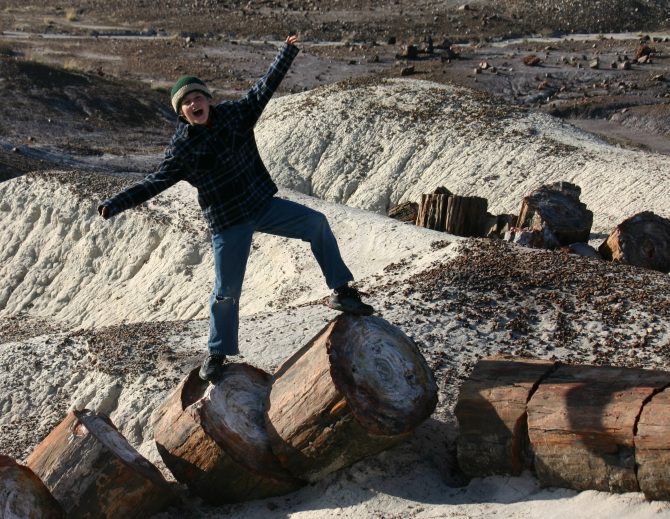
The most famous petrified forest is near Holbook, AZ. Huge trees were buried in sediment which then became sandstone.
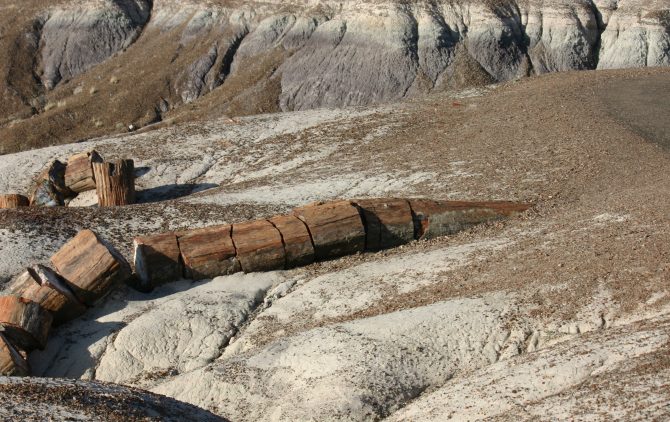
Once exposed by erosion the logs break into sections due to summer’s heat and winter’s freeze just like cracks which form in a cement sidewalk.
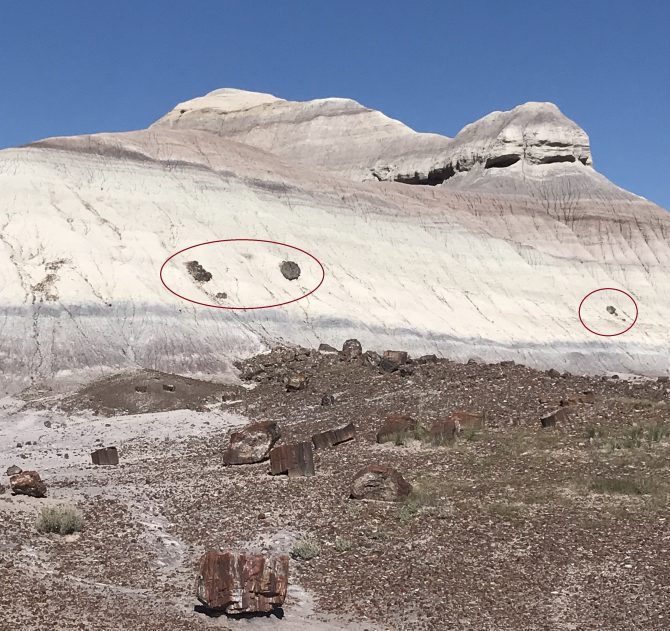
During the retreating stage of the Flood, as the waters were rushing into the newly formed sea basins, much of the sediment was eroded away leaving the logs behind. Buried within the remaining white sandstone hides an untold number of petrified logs.
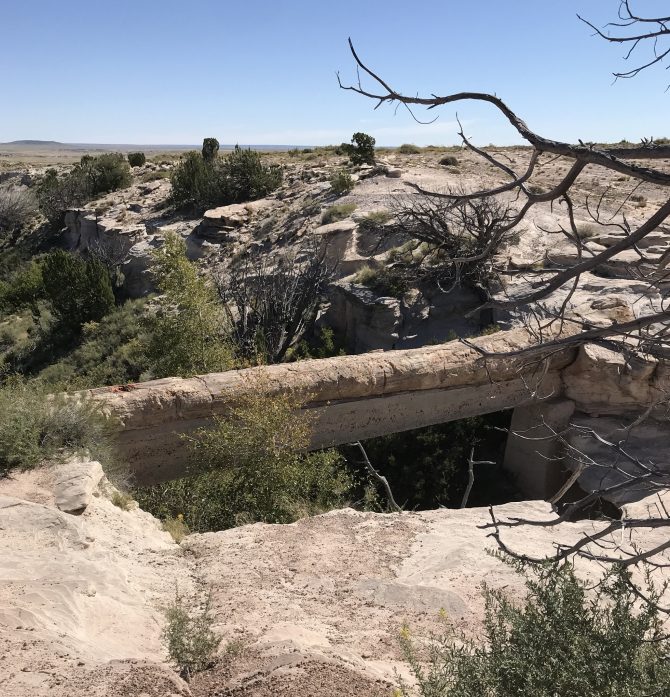
As the sediment was eroded away, this petrified log remained as a bridge spanning across the ravine. The park service added the concrete reinforcement to preserve this unique feature.
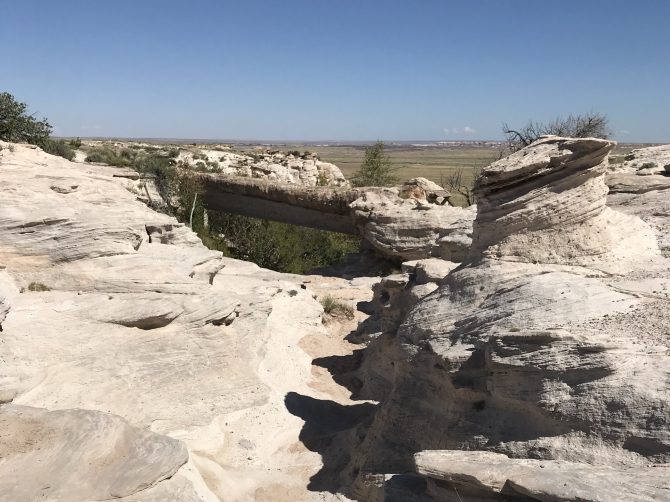
Petrified wood found across America
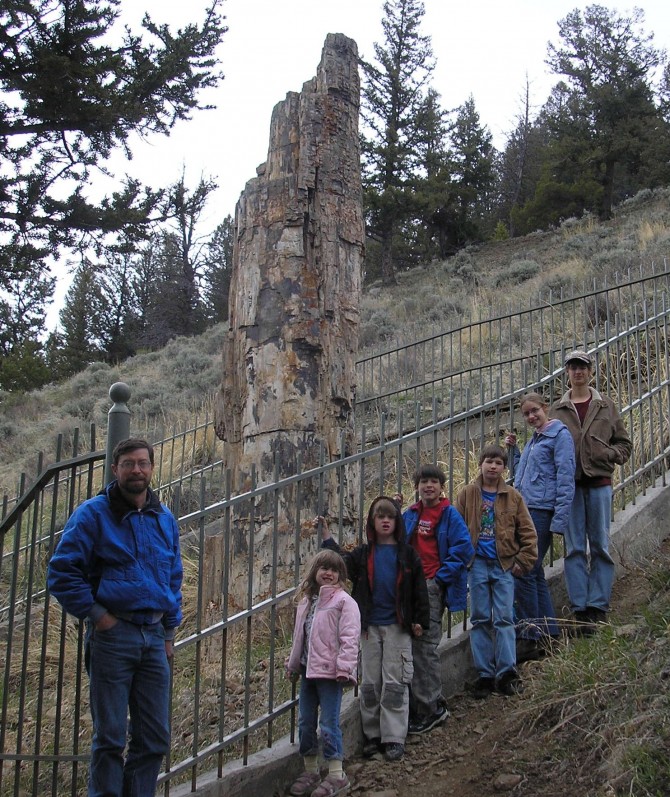
Another famous petrified forest in found in Yellowstone National Park. There used to be a sign describing how this tree and the ones like it on the other side of the ridge were from multiple forest which grew over the course of millions of year. Since the eruption of Mount St Helens, this sign has been replaced. It is now acknowledged that the trees were all quickly and catastrophically buried. The lack of roots and similarities in growth ring patterns, show that all of the trees grew in another location as part of the same forest regardless to the level at which they are now buried.
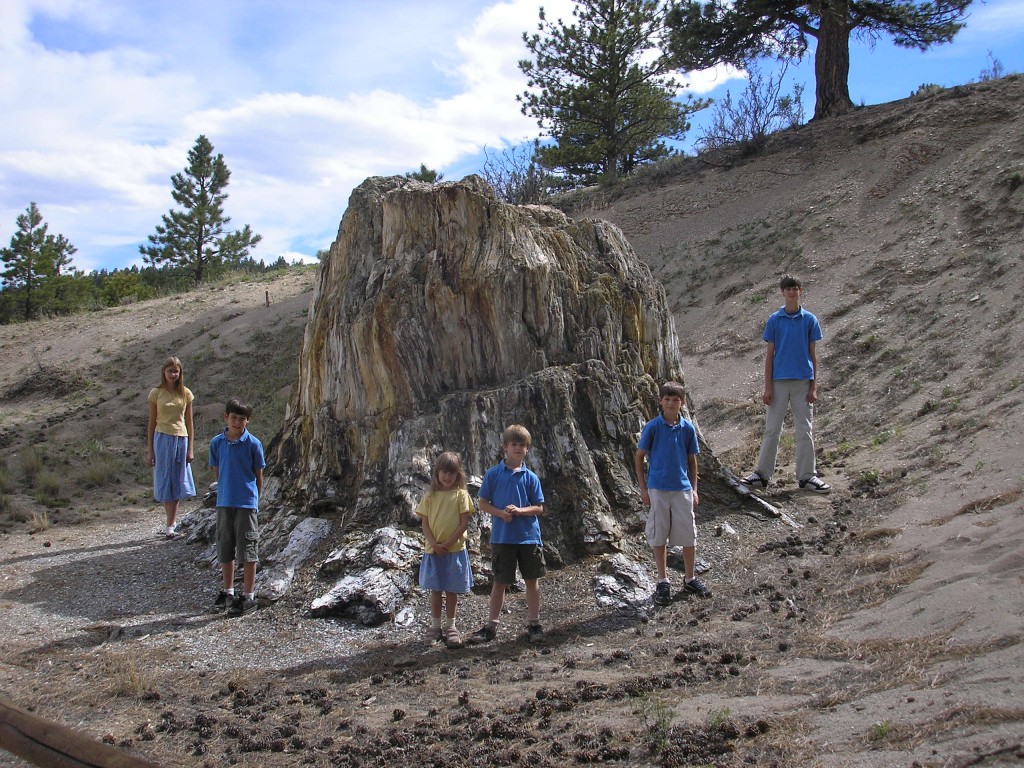
This Sequoia stump is part of a small petrified forest, Florissant Fossil Beds National Monument, near Colorado Springs. Although the stumps are upright, there is no petrified root system. they are not in growth position. Imagine the force of water needed to uproot and transport a sequoia tree.
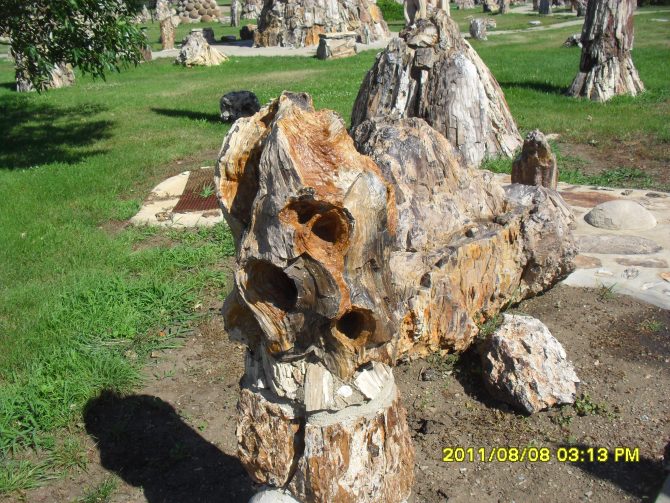
Lemmon, SD is home to a park constructed of petrified wood found within a 20 mile radius of Lemmon. Notice how the limbs were ripped out or rotted away from this log.
During the Flood, uprooted trees formed vast islands of drifting wood which either became waterlogged and sank or were beached on the rising continents.
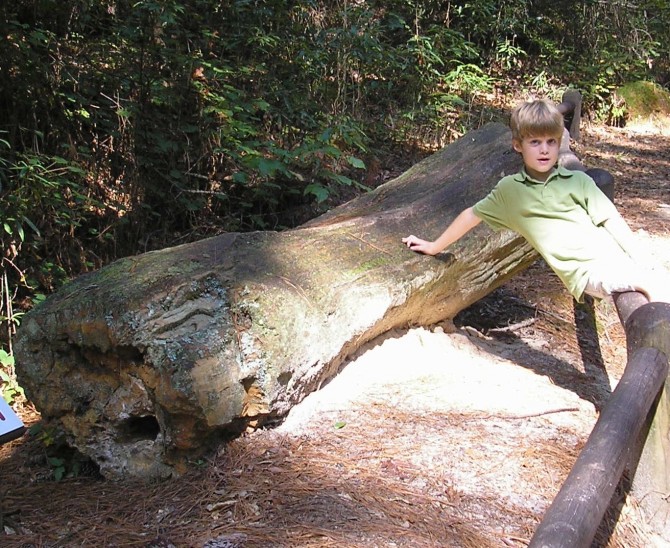
Jackson, Mississippi is home to the largest petrified forest east of the Mississippi River.
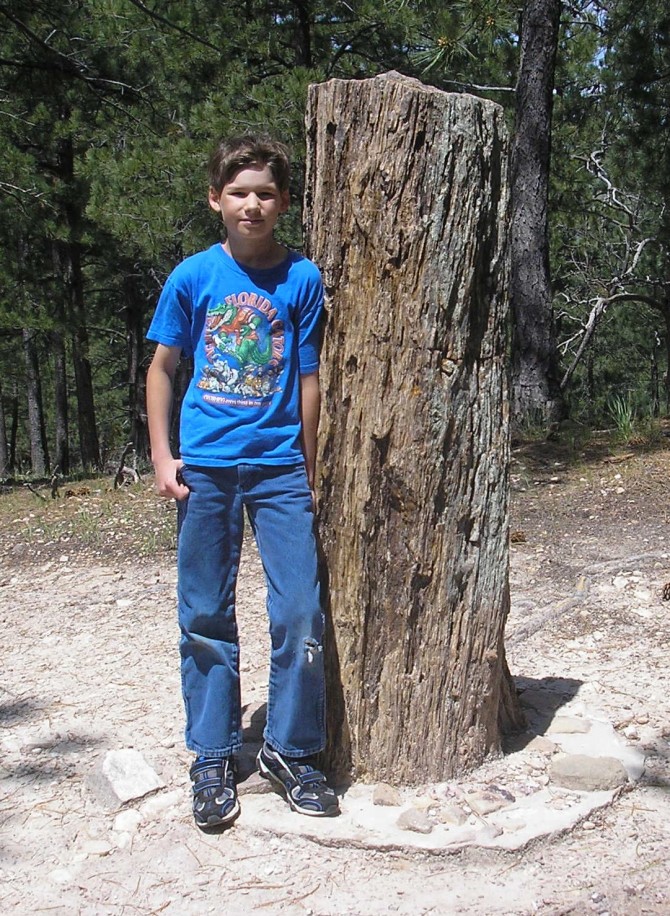
This upright Cyprus trunk is part of a small petrified forest near Rapid City, SD.
The Stones’ True Story By Carla Estell © 1993 In the ark all were safe and sound But outside it’s walls all else had drowned. The beautiful world that God had made, Was now a swirling, mud filled sea For God could not allow wickedness to be. Oh, how He grieved while destroying His creation, When splitting asunder its very foundation, Watching layer after layer of mud and debris being laid, Beneath man and beast’s watery grave. Oh, if only people would learn to behave. It’s not hard to imagine what could have transpired; What thoughts the turbulent sea inspired. While watching the death of those who had strayed, I can almost hear God the Father say, “My Son, my Son, how shall we teach them to obey?” And His reply, “Let’s turn these trees to stone And preserve the animal’s bone. Then, as the waters from land recede, It will channel through the muddy ground Uncovering the fossils so they’ll be found. Generations that come and go will have no excuse but to know For there in the rocks they will clearly read the story of this destructive day. They’ll be reminded of their need to learn Your will; and Your will obey. For only by following Your instruction Will man be saved from utter destruction As some were on this day.”
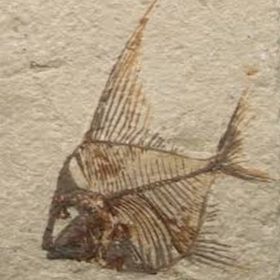
Find out more …
- About The Estells
- Another possible solution for disharmonious associations in Ice Age deposits
- Articles
- Connecting the Dots
- Contact information
- Creation based VBS
- Creation Resources
- Crinoid Fossils: Evidence of Millions of Years or the Global Flood?
- Did Winter Cleanse the Flood Water of Excess Salt?
- Do Antarctic Fossil Forests Prove Trees Grew near the South Pole?
- Educational Resources
- Fish Fossil
- Fish Fossils
- Geodes: Crystals Hidden Within a Round Rock
- Geology Explained in Terms of Global Flood Recovery
- God’s Forgotten Promise
- Living Fossils
- Making logical sense of earth’s geological column.
- Mount Saint Helens
- Mount Saint Helens
- Petrified Wood
- Petrified Wood
- Post Flood Migration of Mammals
- Printed Letters to the Editor
- Resources
- Reverse Engineering the Grand Canyon
- Seeing God’s Ingenuity in Earth’s Design
- Seminar descriptions with Fliers and Bios
- Seminar Topics
- sliderImages
- Songs and Poems
- Tapirs, Endangered or Hardy Survivors?
- The Demise of the Mammoths
- The Flood
- The launching of our creation ministry
- The Overlooked Flood Stage
- The Rewriting of Paradise
- The Rocks Speak Out
- The Stones’ Story Retold
- The Stones’ True Story
- The Way of Salvation
- Videos
- Was there an Ice Age?
- Whale Falls: Present Key to the Abundance of Sea Invertebrate Fossils

